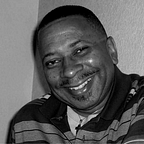BIPOC AND PROUD: A Roundtrip through the cultural timeline
America has long had the privilege of being host to a diversity rarely seen in today’s world. BIPOC, which stands for BLACKS, Indigenous, and People of Color, refers to the amalgamation of these three communities that have formed an integral part of the culture of the USA.
The BIPOC Community in the USA has risen to prominence, due in part to widespread social media. It highlights the violence, discrimination, and subjugation faced by the Black and Indigenous community, as well as the prejudice and segregation endured by the varied native population. The term began being widely used in the early 2010s and gained momentum in light of the mounting racial violence seen in the past ten years. Here, we explore a little more about what exactly defines this community — perception, views, process, and line of action — and the steps this community takes to impact the American community as a whole.
Usage and Drawbacks
The term People of Color was first used in The Oxford English Dictionary in 1796 to refer to non-white citizens, migrants, and slaves. Later, to include both the Black and Indigenous communities, the other two letters were added; however, it is not a simple addition of two communities to the collective, but an expansion of the approach, usage, and reach of the term BIPOC.
Although commonly and sometimes wrongly used to refer to the entire non-white community, the term BIPOC in the correct usage does serve to highlight the injustices faced by these communities, especially as it trends through Facebook, Twitter, Instagram, and other social media. However, a particular drawback faced is the generalizations and misrepresentations that lead to losses in the uniqueness inherent to each community. According to Sylvia Obell, a host of the Netflix Podcast “Okay but Listen,” this is akin to cultural erasure, a purposeful lumping together of communities, and in doing so, deletion of the unique challenges faced by each community. A simple example of this would be that to lump Latinx and Asians together as People of Color would be unreasonable as they are two distinct communities with their own culture and values, and it would be remiss to lump them together when referring to them. As such, there is a need to understand and relate with the separate experiences of the various communities; then only can a sense of identity be formed together. This is essential as they all reside within the same United States of America at the end of the day.
Objectives:
With survival being the initial objective, the communities have long resisted the impacts of White Supremacy and Capitalism through various levels of the organization by the communities. But, not all the struggles faced by the communities are similar, for instance, People of Color don’t face the same systemic oppression and racial discrimination that Blacks and Indigenous populations do. This has sometimes affected the collective effort in forming bonafide and self-functioning intergroup relationships. Thus, BIPOC models itself to:
- Form a common platform to understand and empathize with the distinct struggles faced by the BIPOC communities and unite against the common enemy — Native Invisibility, White Supremacy, and capitalism.
- Maximize the strengths of each community by gaining an understanding and respect for the diverse heritage and culture of the BIPOC communities.
- Approach each community with care and concern with an education on the present state of the intergroup relationship and an attitude to foster justice and healing.
Goals:
- Cultivate relationships among the various individual communities in the US and provide a united front in the face of a hostile environment
- Revamp the Black/White Narrative to include anti-racist analysis and integrate the same practice into the wider BIPOC community.
- Highlight how racism in the USA — in the form of White Supremacy and Native Invisibility — is internalized and expressed in forming divisions within the community and forms pitfalls in efforts to develop collaborations across communities.
What we do?
- Conducting workshops to:
- Provide a detailed education on the historical and contemporary information along with an approach toward fostering intergroup relationships while retaining the solidarity of each individual community.
- Fostering a framework on Anti-racism in our institutions and communities and integrating it into our growing culture, and maintaining a pro-Black stance in with the anti-racist practice of BIPOC.
- Provide an opportunity for the youth community to carry the opinions of these communities through various platforms to form a rising awareness in The US as a whole.
- Form a medium for BIPOC representatives to influence change by means of their resources.
Conclusion:
This community meets the long-sought-after need of these communities for understanding and acceptance and the proper collective representation.
Author’s Bio:
Chris Dawkins
Chief Operating Officer at E-Log Plus
The Ohio University-San Antonio, Texas
